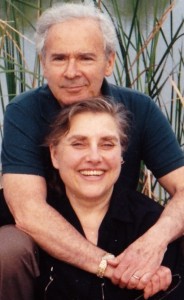~ by Howard Eisenberg ~
It could be said (so I’ll say it) that in 1991 when my late (and amazing) wife Arlene and I visited Willingway Hospital in Statesboro, Georgia, for the first time that The Recovery Book was an accident waiting to happen. But at the time, we sure didn’t expect it to happen.
We were there to write a magazine piece about Dr. John Mooney, one of those rare MDs who was willing to admit that he was an addict and an alcoholic. Not that he drank or drugged anymore. Yes, he’d been locked up for a couple of years in Lexington Prison when the government figured out he’d been writing an army’s worth of drug Rx’s for his personal use. But that had been a dozen years earlier, and even when he was drinking, patients said they’d rather be operated on by Dr. John than any other surgeon in town.

We did write that article. In doing so, we learned a great deal about Dr. John and his family. Two sons and a daughter and John’s wife, Dot, became addicts and alcoholics, too — but they came out of it clean, sober, and able to hold down responsible leadership positions at Willingway. Their stories made us want to write a book about the Mooneys. How at first they’d turned their home into a recovery center for hundreds of patients, but then, with their children sleeping in backyard tents and walk-in closets, with an SBA loan they finally built Willingway, where recovery rates have been continually way above average.
But when we talked to Dr. Al Mooney, John’s son, the hospital’s medical director at the time, and the only one in the family who’d never taken a drink or drug in his life, he told us about the book we should write first.
“Sure, you could write about the family,” he told Arlene, “but what we really need is a book like the classic you wrote. Only instead of What to Expect When You’re Expecting, it would be what to expect in the first days, weeks, months, and years of recovery. We help people get started while they’re here at Willingway, but what they need is a kind of life and sobriety preserver to take with them when they leave. Could you write that book with me?”
We could. We did. And that’s how The Recovery Book was born, and how in the 20 years since its publication in 1992, it has become a slow-but-sure, word-of-mouth 360,000-copy best-seller. A lot more, much of it practical and encouraging, has been learned about addiction since then.
It’s time for Dr. Al – with a little help from Catherine Dold and myself – to update what we knew then and help women and men who’ve hit bottom to leave the past behind and climb steadily back to the best they can be. That’s a change (not an accident) waiting to happen, and we hope to help make it happen with the second edition of The Recovery Book – new, revised, and coming soon. (Well, by Spring, 2014, anyway. Doing it right takes time.)
